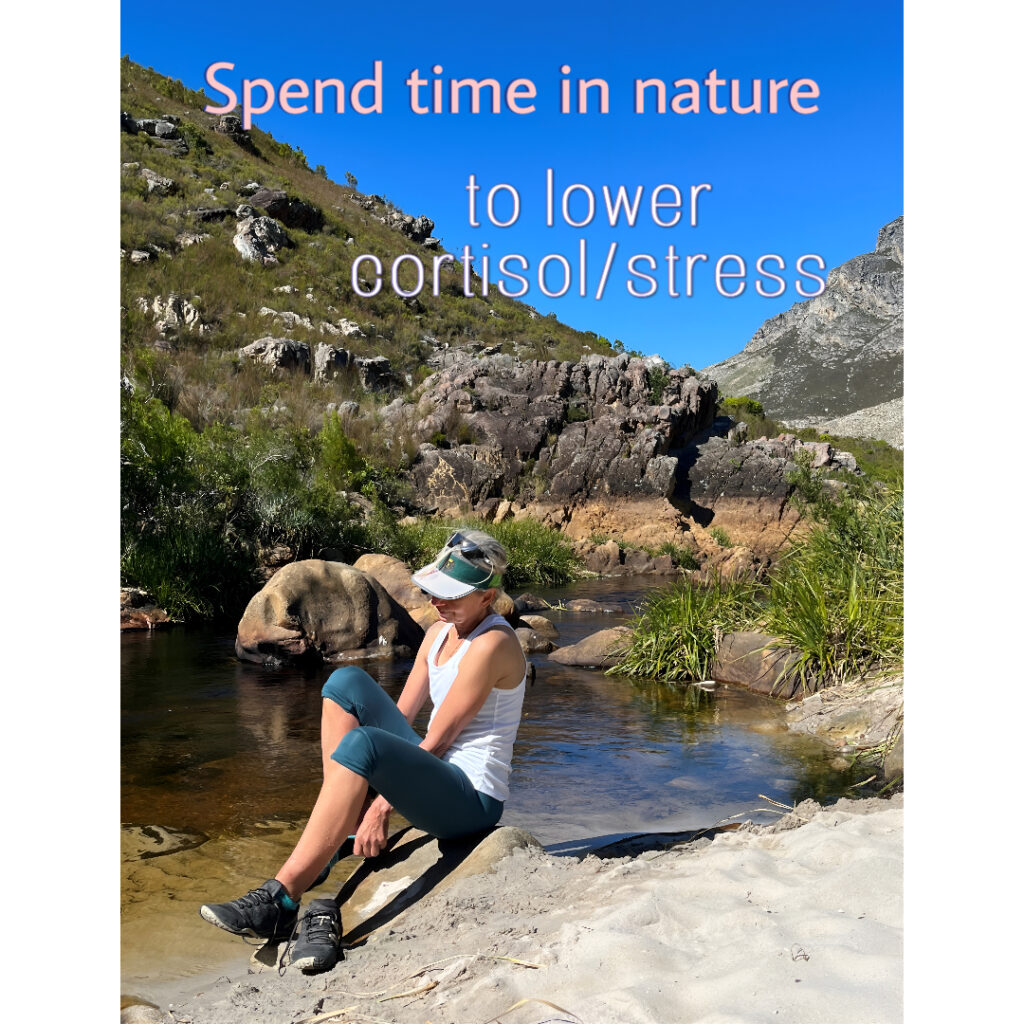
The relationship between Cortisol and Exercise in Menopause
In menopause, we are more prone to elevated cortisol and need to pay attention to managing the stressors in our life, especially if we exercise. Cortisol elevates your blood sugar, which then increases insulin. High cortisol is a known risk factor for cardiovascular diseases, such as insulin resistance and decreased HDL-cholesterol levels. Together cortisol and insulin can increase visceral fat. Waist circumference correlates with the visceral fat amount and is a surrogate marker for insulin resistance.
What is cortisol?
Cortisol is a hormone the body produces; the pituitary gland regulates this. Like estrogen or testosterone, cortisol supports many processes in your body. Your adrenal glands, triangle-shaped organs on top of your kidneys, make cortisol and are part of your endocrine system. Stressful experiences activate this process, so cortisol is often called “the stress hormone.” Cortisol is also a cholesterol-driven steroid, so the more stress you have, the more stimulus you have for storing adiposity. In aging and peri and postmenopause, this often means an increase in visceral fat. So it is also known as the belly-fat hormone.
What does cortisol do?
Cortisol is significant in the stress and inflammation response, metabolism regulation, and immune function. During a stressful event, cortisol activates your internal fight or flight reaction to protect the body. It increases your heart rate, blood pressure, and muscle tension and turns off tasks not needed at that moment, such as digestion.
Too much cortisol
While necessary and helpful in short bursts, prolonged cortisol release can lead to chronic inflammation, decreased cognitive performance, adrenal fatigue, and even Cushing’s Syndrome. Symptoms of Cushing’s Syndrome include weight gain, added fat between the shoulders and in the neck, purple stretch marks, and weak muscles.
Reducing your training intensity can help the body recover sooner and lower cortisol if you’re in a state of chronically elevated cortisol. In peri and postmenopause, we are more prone to elevated cortisol, so we need to pay attention to managing cortisol levels, particularly athletes who train in the mornings when cortisol is naturally higher, especially if they exercise fasted. You can keep cortisol levels balanced by managing the stressors in your life, practicing mindfulness, yoga, breathing exercises, and spending time in nature or other stress reduction techniques. Practicing self-compassion is another tool we can use for reducing cortisol when things are hard.
Cortisol and exercise
In menopause, we need high-intensity interval training (HIIT) to stimulate the epigenetic changes we want within the muscle fibers and tissues to better use carbohydrates. HIIT reduces fasting blood sugar levels, improves insulin sensitivity, and is consequently good for cardiovascular and metabolic health.
At the same time, we know that exercise, including HIIT-type cardio, can increase cortisol and stimulate fat storage. To mitigate this, we need to follow up with protein and a little carb to kickstart that anabolic process and get cortisol levels down. The key is the dosage and timing of food around exercise; this is our recovery mechanism. Your body needs nutrition straight after a hard session to stimulate anabolism to lower cortisol.
Resources
Widely known as the body’s stress hormone, cortisol has a variety of effects on different functions throughout the body.
Cortisol levels during the menopausal transition and early postmenopause
The study aimed to examine the influence of menopause-related factors, stress-related factors, symptoms, social factors, and health-related factors on cortisol levels during MT.
Conclusions: Overnight cortisol levels during the MT were associated with E1G, testosterone, and FSH levels. In addition, they were significantly and positively associated with epinephrine and norepinephrine. MT stage, symptoms, and social, stress-related, and health-related factors had little relationship to overnight cortisol levels when considering other biological indicators.
Results: An increased 24-hour urinary cortisol level was related to decreased HDL-cholesterol level and correlates to waist circumference and insulin resistance.
Conclusions: Early postmenopause is associated with increased 24-hour urinary cortisol levels. High cortisol is a known risk factor for cardiovascular diseases, such as insulin resistance and decreased HDL-cholesterol levels.

Comments are closed.